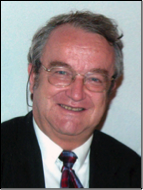Date
Cost
Free and open to the public
Location
Research Pavilion, Room 169 (NanoScience Technology Center)
Description
Abstract: Traditional Pharmaceutical R&D process suffers an incredible attrition rate and a single new drug substance needs till registration a development time of 10-12 years. Thanks to consulting companies such as McKinsey the current complex methodological workflow was streamlined. The concept of the workflow is more or less identical in all major pharmaceutical companies having the capability to do all clinical trials needed. Unfortunately, the current workflow is carved in stone and nobody dares to change it being afraid of losing time and jobs. However, we know from biology that a system carved in stone has no degree of freedom for an evolution. Thus, a radical change is needed such as to adopt the workflow of the automotive and aircraft industry, which designs the vehicle first in-silico until it is functional and ready for mass production, see: Impact of the digital revolution on the future of pharmaceutical formulation science, invited paper, Europ. J. Pharm. Sci. 87 (2016) 100-111. The FDA pushes currently forward the slogan “Right, First Time” to save time with reference to the 3D of the critical path: Assessing safety, Medical Utility and the industrialization process. All three dimensions will be shortly discussed. Industrialization: Due to wrong designs of the drug delivery vehicle the world wide annual loss was estimated in 2014 to be US $184 billion. The answer to this problem is to design drug vehicles first completely in-silico. It will be shown that this is possible. For that it is necessary to consider percolation theory and the existence of percolation thresholds, i.e. critical concentrations of the drug or auxiliary substances. A revision of the current ICH Q8 guidelines for the pharmaceutical industry needs to take care of the impact of percolation theory: At percolation thresholds system properties can show a fracture in the continuum similar to a geological distortion or the formation of a grand canyon. Medical Utility: The current philosophy consists mainly in finding a therapy which is effective and repairs the symptom such as high blood pressure. This concept needs to be challenged because it has only great advantages for the shareholder, but does not cure the disease of the patient. The existence of the placebo effect is still a mystery. Is there a therapy which stimulates the self-healing process, i.e. activates the right genes expressing the proteins needed? A tentative answer for future research avenues as food for thoughts is proposed, which includes nanocomposite freeze-dried pellets with a high reactive surface. Such freeze-dried nanocomposite pellets with a high surface are not only of interest to pharmaceutical products but have also broad technological applications. Such pellets can be used as an intermediate for manufacturing tiny 3D resonant loudspeakers, such as for Apple’s iPhone and iPad earbuds: Assessing safety: In case that the self-healing process can be realized with an appropriate medication, the problem of safety should become a much minor issue, as the focus is not a medication, which leads to an improvement of an isolated symptom having side effects or a potential to interact with other high potent drugs.
Biography:
Dr. Hans Leuenberger studied originally experimental physics and wrote his PhD thesis in nuclear physics at the University of Basel. He got a training on the job in Pharm. Technology at Sandoz Pharma (today: Novartis). During the 12 years working at Sandoz he spent a sabbatical at the University of Hamburg (Prof. Sucker) and a sabbatical at the University of Michigan (Profs. W.I.Higuchi, Norman F. Ho, Everett Hiestand). He wrote a habilitation thesis in Pharmaceutics and was ad interim Head of Pharmaceutical R&D Sandoz Spain before he was elected in 1982 to become a full professor in Pharmaceutical Technology at the University of Basel. He received numerous awards (see awards gallery at www.ifiip.ch) and served as president of the Scientific Council of the Swiss Academy of Engineering Sciences (SATW) and many years as acting vice president of the Academy supporting the president of the academy Prof. J.C. Badoux, president of the Federal Institute of Technology (EPFL), Lausanne. Hans mentored over 120 PhD students at the University of Basel, who are working in the Pharmaceutical Industry being hired by Actelion, Drossapharm, Galderma, Novartis, Roche, Sandoz (a new Generic Company incl. Biosimilars), Vifor etc. He is declared inventor in 12 patent families of the companies Glatt and Pharmatronics, one patent family, which owns Asulab of the “Swatch” group and one patent, which belongs to the University of Iowa. More details incl. list of papers can be found at www.ifiip.ch.
Contact:
Cathleen Wolf
NanoScience Technology Center
Email: Cathleen.Wolf@ucf.edu
Presenter

Dr. Hans Leuenberger
Formerly at...
Institute for Innovation in Industrial Pharmacy
Department of Pharmaceutical Sciences
University of Basel, Switzerland
More information
Light refreshments will be served